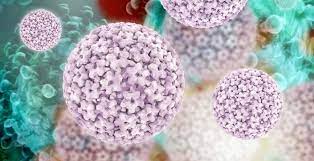Rift Valley fever; It is a viral disease of domestic animals in sub-Saharan Africa such as cattle, buffalo, sheep, goat and camel.
It is transmitted by contact with the blood, body fluids or tissues of infected animals or by mosquito bites. There is no evidence of person-to-person transmission.
A member of the genus Phlebovirus of the order Bunyavirales RVF viruscauses this disease.
In 1931, the virus was found in sheep on a farm in Kenya's Rift Valley during an investigation into an outbreak.
Since then, outbreaks have been reported in sub-Saharan Africa. For example, an outbreak was reported in Egypt in 1977. RVF virus It entered Egypt through the infected animal trade and the irrigation system of the Nile.
After the El Niño event and extensive flooding, a major epidemic occurred in Kenya, Somalia and Tanzania in 1997-98.
in September 2000 Rift Valley feverspread to Saudi Arabia and Yemen due to the animal trade from Africa. This is the first time the disease has been reported outside of Africa. This event increased the likelihood of the disease spreading to other parts of Asia and Europe.

What are the symptoms of Rift Valley fever?
Symptoms of the disease RVF virusIt occurs between two and six days after exposure. Rift Valley fever symptoms It is:
- Fire
- Weakness
- Back pain
- Dizziness
less than 1% of patients
- hemorrhagic fever
- Shock
- Jaundice
- It causes bleeding in the gums, skin and nose.
The mortality rate of hemorrhagic fever is about 50 percent.
RVF symptoms It takes between 4 and 7 days. After this time, antibodies develop. The immune response becomes evident. Thus, the virus disappears from the blood.
Patients usually recover one to two weeks after experiencing symptoms.
Blurred vision and reduced vision decrease one to three weeks after symptoms appear. However, eye lesions may occur. The lesions usually disappear after 10 to 12 weeks.
Severe form of RVF in humans
Rift Valley fever A small proportion of patients with a disease develop a much more severe form of the disease. One of three different syndromes may occur:
- Ocular (eye) disease (0.5-2% of cases)
- Meningoencephalitis (less than 1% of cases)
- Hemorrhagic fever (less than 1% of cases).
How is Rift Valley fever transmitted?
- Most people who become ill contract the disease through direct or indirect contact with the blood or organs of infected animals.
- For example, handling animal offal during slaughter, giving birth to animals, being a veterinarian. RVF virusWhat increases the risk of getting caught.
- Therefore, some occupational groups such as shepherds, farmers, slaughterhouse workers and veterinarians are more susceptible to infection.
- In addition, this virus can be transmitted by contact of an infected knife with a wound or cut, or by inhaling aerosols from the slaughter of infected animals.
How is Rift Valley fever treated?
Treatment of Rift Valley fever, It is done with painkillers and fever reducers to help relieve symptoms. Most patients recover one to two weeks after the onset of the disease. More severe cases are treated with hospitalization and supportive care.
Can Rift Valley fever be prevented?
Rift Valley feverPeople living in or traveling to areas where the disease is common should take the following precautions to avoid catching the disease:
- Do not come into contact with infected blood, body fluids or tissues.
- To avoid contact with infected blood or tissues, people working with animals in areas where the disease is common should wear protective clothing such as gloves, boots, long sleeves and face shields.
- Do not eat unsafe animal products. All animal products must be thoroughly cooked before consumption.
- Take precautions against mosquitoes and other blood-sucking insects.
- Use insect repellent and mosquito net.
- Wear long sleeves and pants to protect your exposed skin.
References: 1










